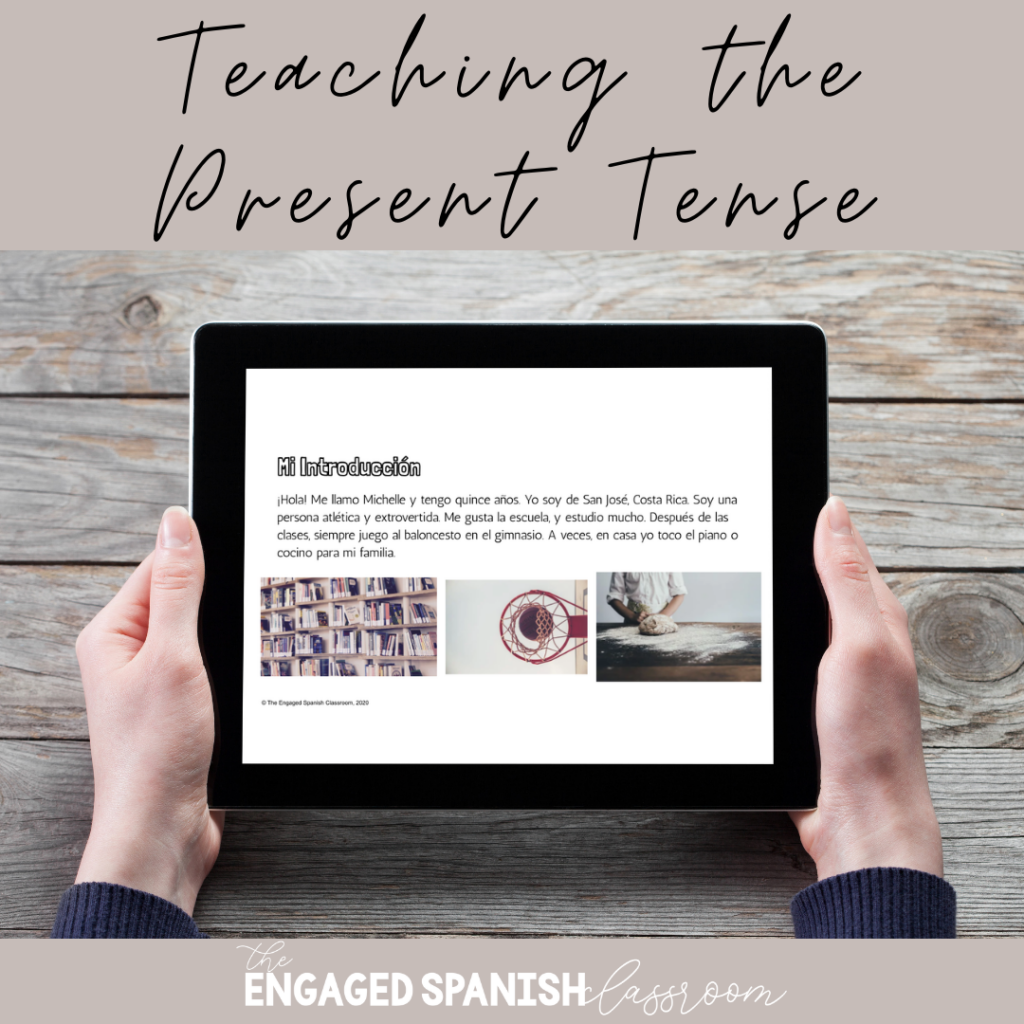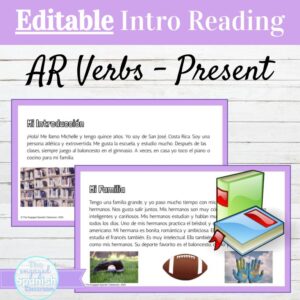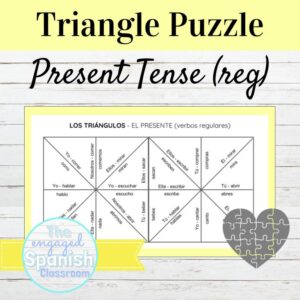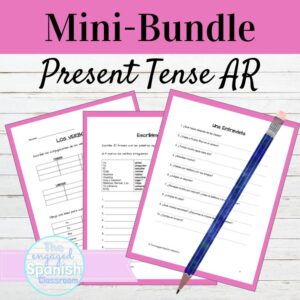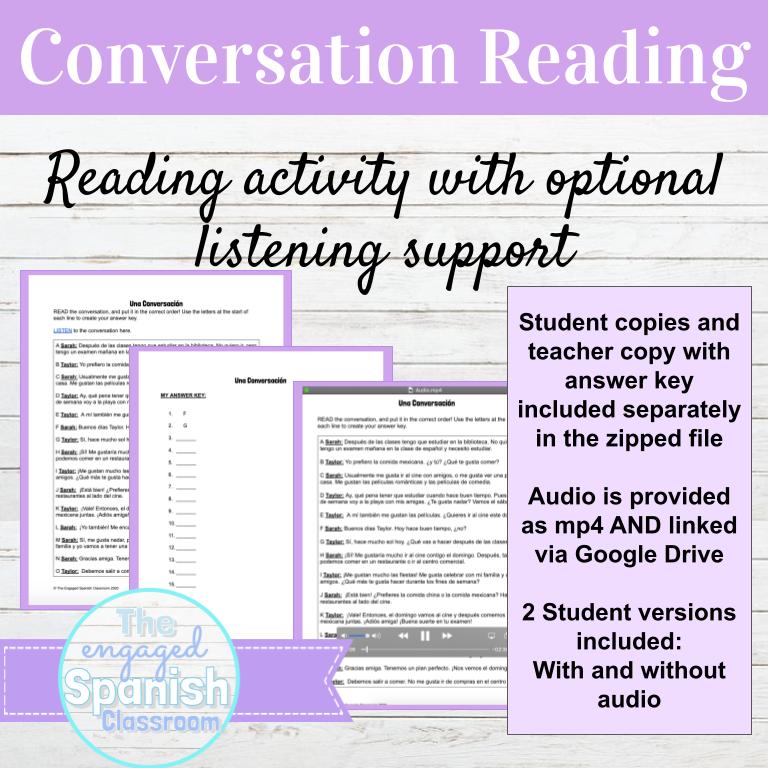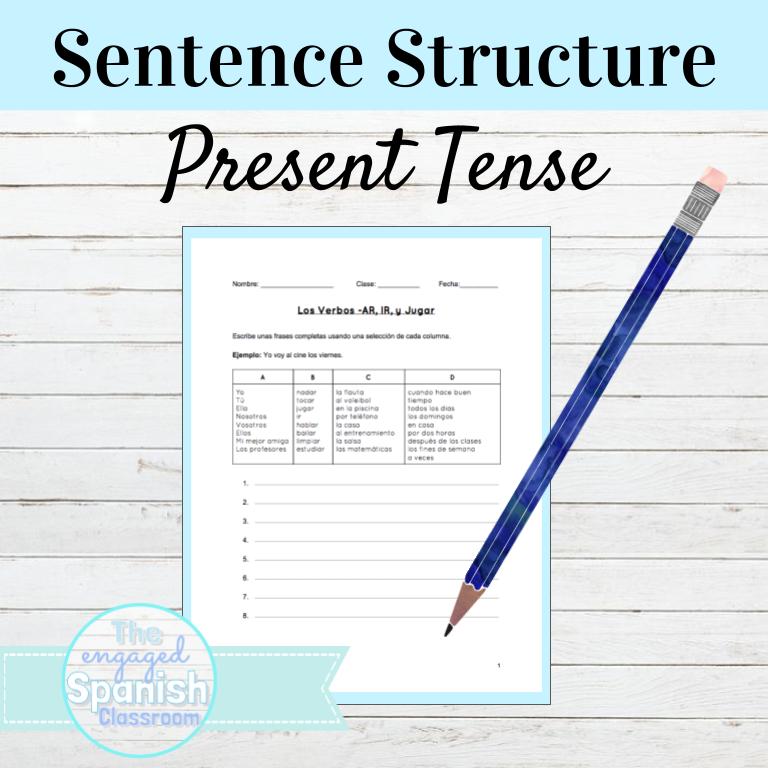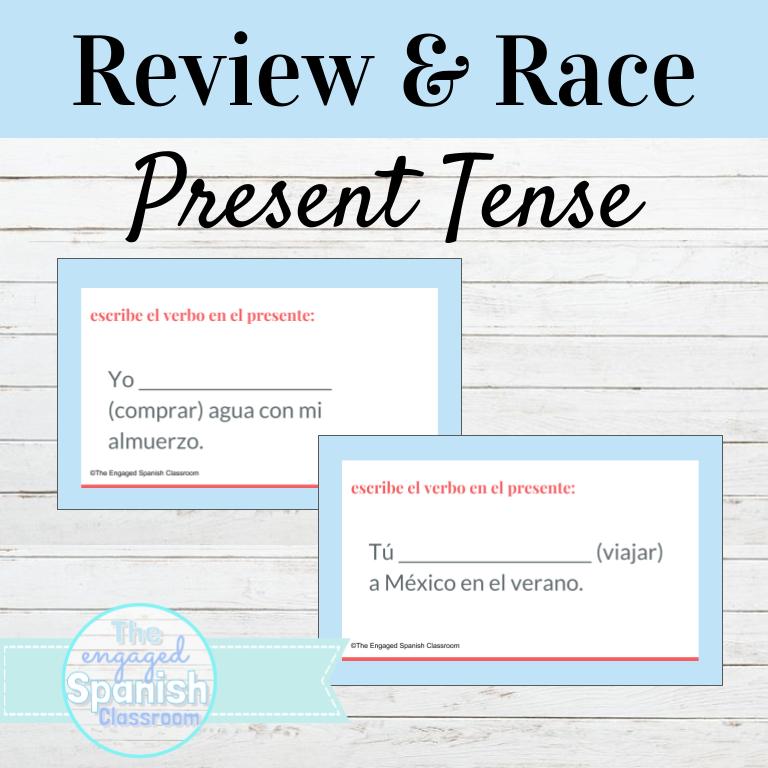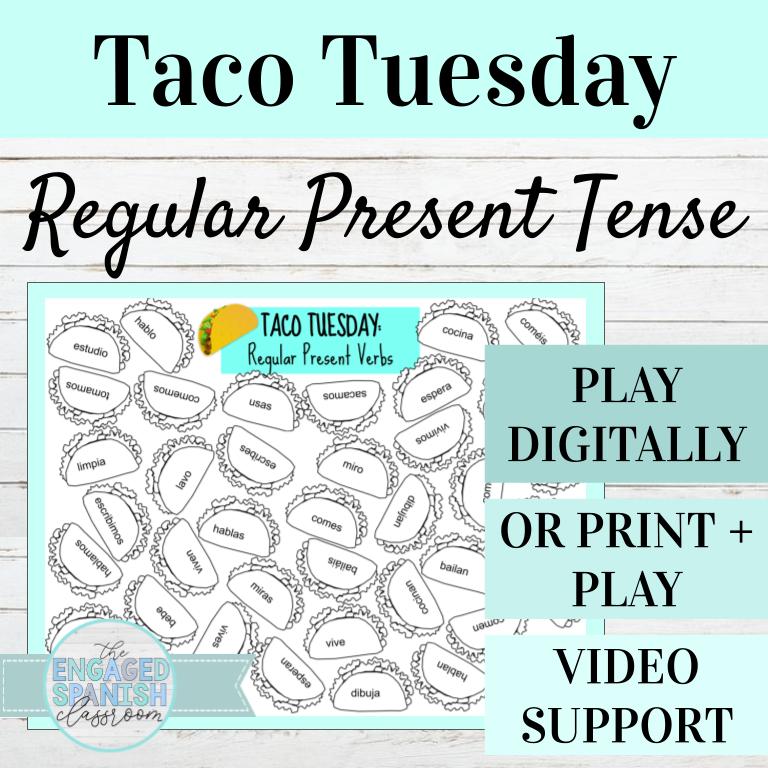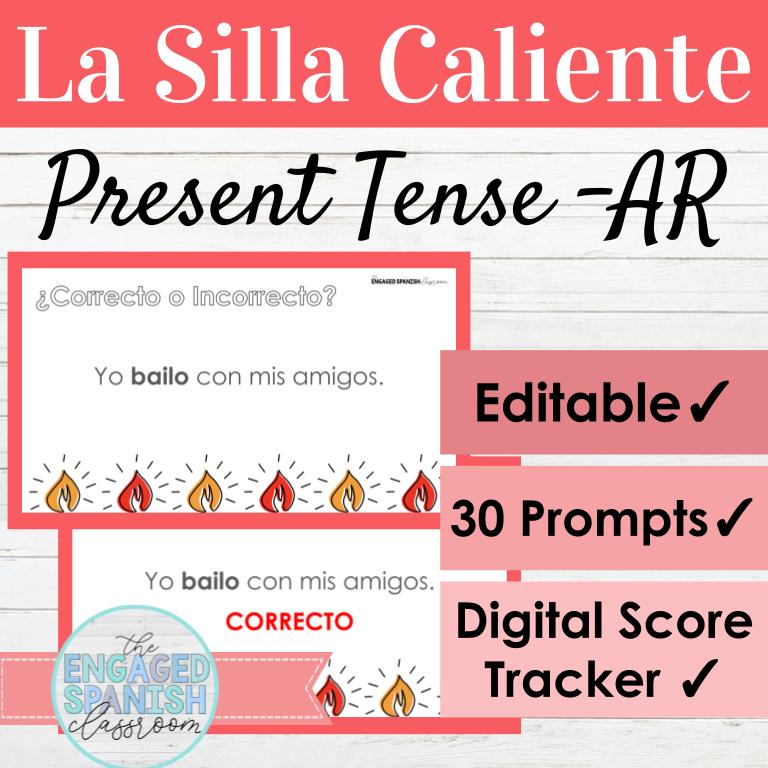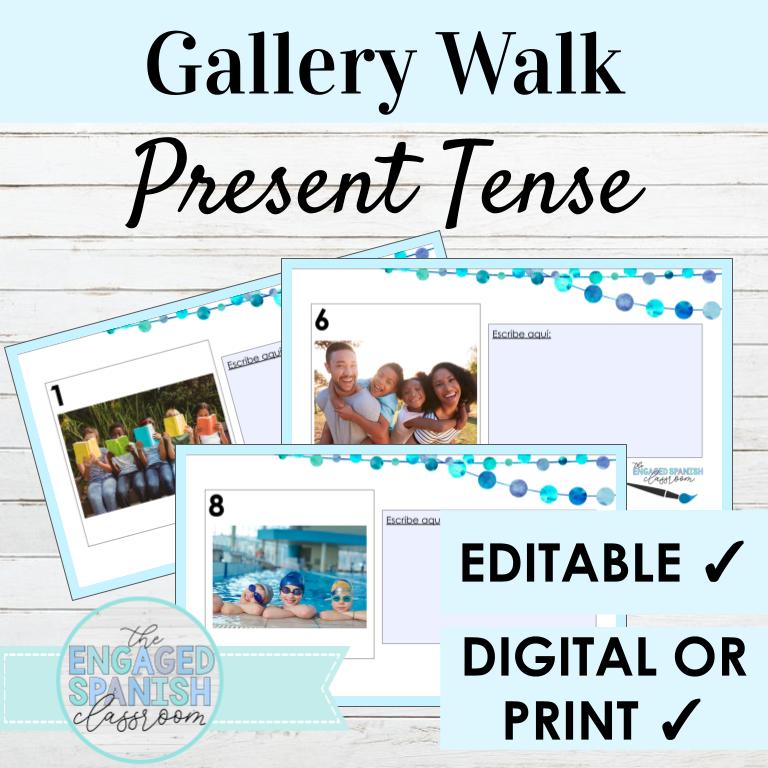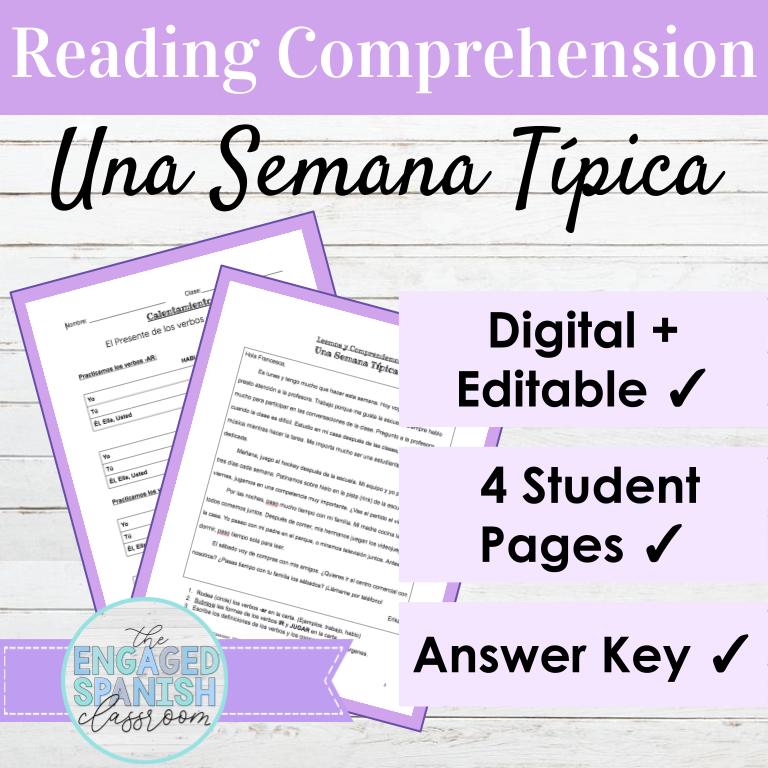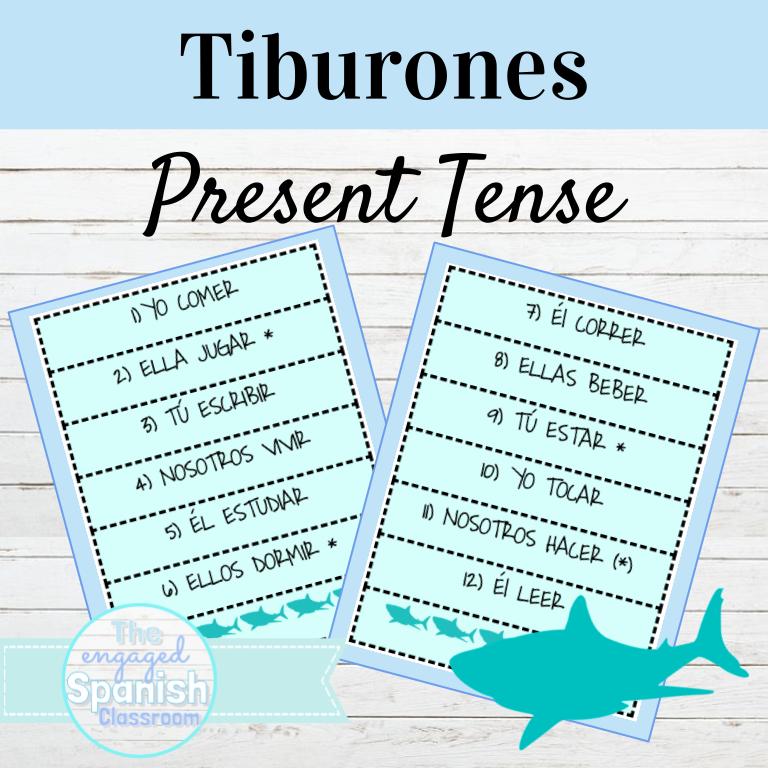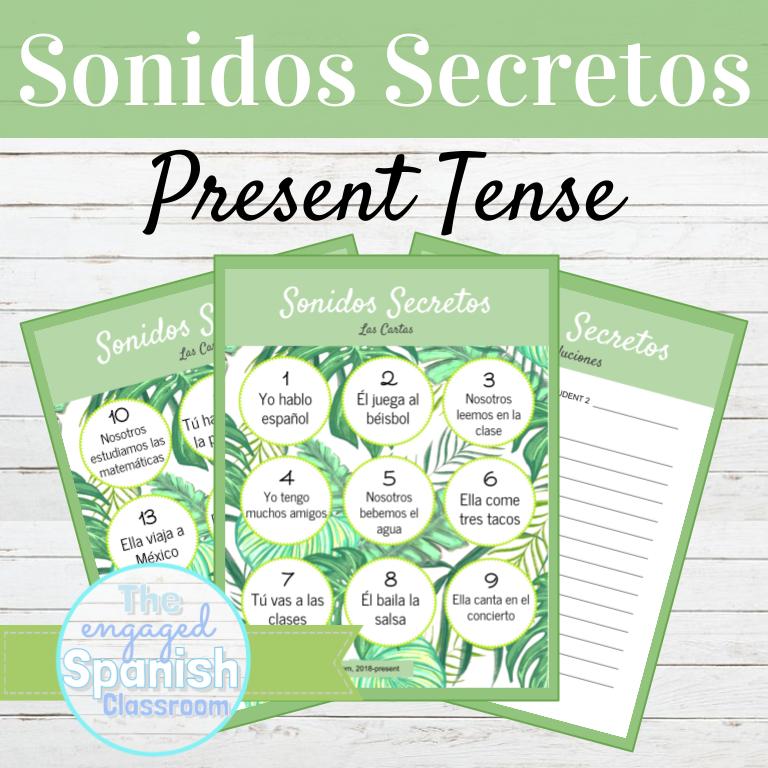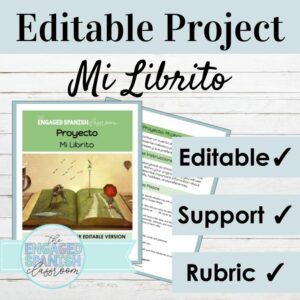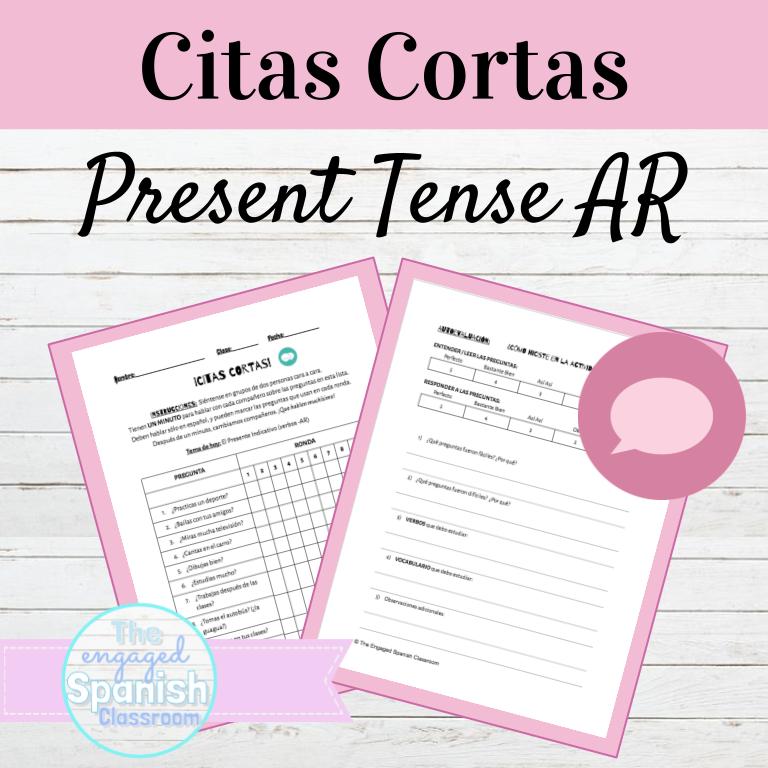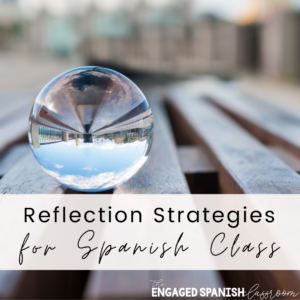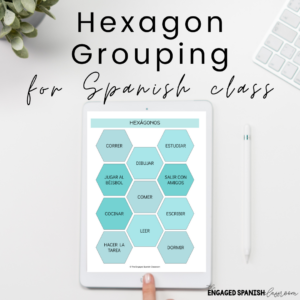Over the past few years I have worked hard to examine how I approach new material in my classes. During the first few years of my teaching career, I taught directly from a textbook. To be honest, I was bored. So were my students! I didn’t use any strategies that could remotely be considered comprehensible – I was following the most traditional teaching habits and doing things the way I thought they were “supposed” to be done. As I grew in my teaching, I learned that just because “it has always been done this way” doesn’t mean it always should be done this way. I’ve been lucky to be surrounded by supportive colleagues and a department that fosters growth and new strategies and ideas.
As I start this new blog series, the first unit that comes to mind is of course teaching the present tense. I love teaching Spanish 1 every year because I love watching students grow so drastically in their language journey. Selfishly, I love seeing the immediate effects of my teaching.
To be honest, I also love sharing my passion with students who are experiencing the language for the first time. It is a privilege to hold the doors open for them, as so many held the doors open for me. I think of the influences in my language education often; my middle and high school teachers, my college classmates from Mexico, Spain, and Argentina, and my host families in Mexico and the DR. I am also lucky to be surrounded by native speaking colleagues that support me in my constant learning (thank you for always answering my texts and questions… Brenda, Margoth, Maria, Vicky!) All of these influences in my life have fueled my passion for the language, and it is my goal to inspire these feelings with my first-year students.
Goals for this level
In Spanish 1 it is so important not only to share passion for the language and culture, but also to help foster a strong sense of confidence and capability. I do my best to show that making mistakes is not only OK but actually a sign of strength and progress. In my teaching of all levels I do my best to provide lessons, activities, and assessments that offer the following:
- various opportunities for input
- movement and/or hands-on options
- consistent opportunities for student choice
- a balance of independent work and group work / collaboration
- structured and supported opportunities for low-pressure output
- engaging games / fun 🙂 that are still language-focused
- clear expectations
- varied and purposeful assessment styles
- assessment options that offer student choice when possible
Introducing the unit
I try to start each unit with various styles of INPUT that prove to students that A ) they understand more than they think and B ) they CAN learn new things! I love hearing, “Wow, I actually understand this!”
You *don’t* need to start new units the way our teachers used to, with notes, lecturing, and explaining from the start. You CAN give students the power to explore the language and make discoveries on their own.
One way I like to do this is with simple readings like this (free download!) for the present tense of AR verbs. The reading is simple enough that students can work independently or in small groups to discover patterns and build confidence in their abilities. We then use their discoveries to guide our “notes” for the unit, when we come back to review as a whole class.
I also LOVE to use puzzles at the very start of a unit. In Spanish 1, for the present tense, this may need to be on day 2. But for upper levels and once students understand the general patterns of the language, I use puzzles like these as our warmup before we even begin our study of the tense/unit. I love what a confidence builder it can be! Regardless of level, these can be done individually or in pairs, perhaps racing against another pair or small group 🙂
Sometimes more traditional guided notes can come into play at this point, after students have had the chance to see and use the language on their own. The first page here is an example of the style I’d use — I’m likely to give students a few minutes to fill out what they can independently, but then come together as a whole group to ensure accuracy moving forward. We’d potentially save the following pages for another day within the unit.
Here is another great option for another very structured approach to guided notes/practice.
Supported practice
After introducing the tense, I want to offer various styles of supported practice for my students to work on their own or in small groups. (I use groups as much as possible; my students sit in groups of 4-5, so we are naturally in groups every day.) The practice at this stage is still very input-centered, or is very structured and supported output. My goal is still to build confidence and allow my students to explore the language.
These are three examples that are very low-pressure for students, and offer various supports and differentiation opportunities.
Last year one of my goals was to offer more input for my students, both written and oral. I have started creating these reading and listening activities to offer both approaches and help my students build confidence in their interpretive skills. Again, the reaction is usually “I actually understood that!!!”
I really like sentence structure worksheets because students have everything they need to be successful. It is a great confidence builder before students are expected to work on their own with the language. It is very easy to differentiate by offering support at the start, doing a few together as a class before working independently, and more.
The same goes for building student confidence with word races– I love using small white boards for these, so I can see how students are doing as they hold up their answers to each question. That allows me to use this activity as a thermometer for the class. I am able to reflect – How much review do we need? Does the class seem fairly balanced in their confidence? etc.
review opportunities
This section is filled with my favorite things. My goals during review are to make sure my students are having fun, to get them interacting with the language in a way that is low-pressure and communication-focused, and to make sure every activity is valuable and engaging.
Taco Tuesday is a favorite every year. Best played in pairs or groups of 3 – you can read the tutorial here for in person play and here for digital play. Grab a free version to try here!
La Silla Caliente is my most competitive game – students love it! A new editable format as well as a digital score tracker designed by me make gameplay even easier on the teacher. Read the tutorial here and grab a free version for the present tense here!
Gallery Walks are great for motivating your students to communicate and construct output in the TL, while still providing a low pressure and supportive setting. You can read more about how I use them here!
These reading packets are my favorite way to move from input to structured output. They are also a great way to balance group work with independent work. We often move through the sections, switching up our work settings throughout.
Speaking fun
Over the years, I have had no trouble offering a variety of opportunities for my students to practice their reading, writing, and listening skills. I am always confident my students get enough practice and exposure in these areas. Where I always double check myself to make sure I am offering enough? SPEAKING. So I found myself trying to develop various speaking activities with differing approaches and goals.
These are a few go-to speaking activities for this unit that always keep my students engaged and communicating in the target language. If you’d like to read more about my go-to speaking activities, check out this post before you leave!
Tiburones is a great way to get students speaking in small groups. Easy to differentiate, and play for any amount of time! 🙂
Sonidos Secretos is one of the most fun activities I have – and the fact that it’s for SPEAKING blows my mind! The room is always filled with giggles during this one – learn more from my tutorial here.
I like to offer Llama Mía as a stations activity or as a student-choice option during review. It’s another great low-pressure and adaptable option to promote speaking in the target language.
Café Charla is the perfect speaking option for fast finishers, or for the last 5 minutes of class if you need to conference with a few students but want to make sure your other students are on task.
Assessment options
I recently adjusted my syllabus and grading practices to be more proficiency-focused, and I am never looking back! Instead of having grades that seem meaningless in language learning (40% quizzes, 40% tests, 10% homework and 10% participation,) my department has supported a move toward a more intuitive approach. My students’ grades are now broken down as follows: 30% interpretive, 30% interpersonal, 30% presentational, and 10% study habits. (I personally stopped giving homework last year, and I don’t grade very much classwork, so the 10% study habits is heavily based on my students’ own reflections on their participation. You can read more about that approach here, at the bottom of the post.)
When I was a new teacher, I would give 4 page quizzes that included listening, reading, writing, and speaking. Honestly, I gave quizzes like this until very recently. After changing my approach to grading, I have worked to break it down for my students and allow them to practice one skill at a time.
With this new approach, I am forced to be more mindful about the why behind each of my assessments. I also have to work to be more balanced – it has made me offer more interpretive assessments, which my students of course LOVE. In general, I have moved away from the more traditional quizzes, and focus more on the styles below.
My new approach means there is the opportunity and need for strictly interpretive assessments, like this example here for the present tense. I love that my students typically do WELL on these assessments; confidence means the world! 🙂 I also love that I can very quickly create and grade assessments like this. I will make a few versions per unit; I’ll print one to assess interpretive reading, and I’ll simply read the other aloud to my students for interpretive listening.
When it comes to assessing presentational writing, I often still offer lots of structure and supports to my Spanish 1 students. I also want to provide as much student choice as possible, which we often forget when we are assessing our students. Projects like this one are flexible and students can really make them their own while showcasing their skills. I do typically allow students to use notes for their projects (though it is all done in class), so a balance is needed with additional ways to assess presentational writing/speaking.
I mentioned that as a new teacher, I would give *very* lengthy assessments with ALL the sections. When it came to writing, my requirements would be very grammar focused; you need 4 stem-changing verbs! (What? WHY!?) Now, I offer supports, proficiency-based goals, and I am not hunting for errors as a way to remove points. I am happier, and my students are more confident! Here is an example for the present tense in Spanish 1.
For speaking assessments, I prefer to assess my students 1×1 in the hallway. Realistically, we are only able to do this a few times per year, so I typically save that for our quarterly exams (we give 4 rather than just midterms/finals.) In the meantime, I do my best to assess speaking in low-pressure settings. Citas Cortas is a great way to do that! As my students work with one another, I walk around with my clipboard and listen in. I tell my students that everyone is starting with a 5/5. As I walk around, if I hear all Spanish (and it is mostly comprehensible) they keep their 5. If I hear English, or notice they are truly unable to communicate, they may drop from that 5. They are even allowed to ask for another question from their partner; as long as they are communicating in the TL, they are meeting our goal. More often than not, students earn 4s and 5s. You can read more about how I use this activity here.
Again, these approaches are not meant to be used as a one-style-covers-all. They are appropriate with a balance of assessment styles, and some will work better with your teaching style than others! I encourage you to continue to think outside the box when it comes to “assessment,” and offer a variety of options for your students. They may surprise you with their strengths!
Thank you for reading!
I hope you are leaving with a few new ideas to try! Maybe you also found some inspiration to evaluate WHY you choose the activities you do, and how they (along with your grading and assessments) are purposeful!
If you have any questions or would like to see a post for a specific unit, please feel free to hit “contact” at the top of this page! I’d love to hear from you.



